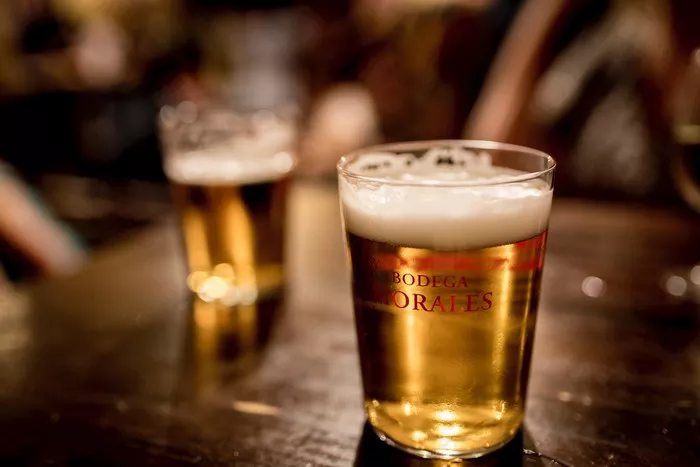Lager beer, with its refreshing taste and smooth character, is a beloved beverage enjoyed by beer enthusiasts worldwide. Behind the scenes of every pint of lager lies a meticulous brewing process that involves a precise selection of ingredients. From malted barley to hops and yeast, each component plays a crucial role in shaping the flavor, aroma, and appearance of this iconic brew. In this article, we’ll take a closer look at the key ingredients that go into making lager beer and the fascinating journey they embark upon to create a satisfying and well-balanced brew.
1. The Art of Brewing: Crafting a Lager Masterpiece
Brewing lager beer is an intricate art that requires a deep understanding of ingredients, fermentation, and patience. Unlike ales, which are fermented at warmer temperatures, lagers undergo a cooler fermentation process that contributes to their signature clean and crisp profile. To achieve this, selecting the right ingredients is paramount.
2. Malted Barley: The Heart of the Brew
Malted barley is the foundation upon which lager beer is built. Barley grains are germinated and then dried in a controlled environment, halting the germination process and developing the enzymes required for mashing. During mashing, the malted barley is mixed with hot water, allowing enzymes to convert the starches in the grain into fermentable sugars. These sugars will later be consumed by yeast during fermentation, producing alcohol and carbonation.
3. Varieties of Malted Barley: Exploring Flavors
Different types of malted barley contribute distinct flavors, colors, and aromas to lager beer. Pale malt, the most common type, imparts a light color and mild flavor. Munich malt brings a rich malty character, while caramel or crystal malt adds sweetness and complexity. Chocolate malt adds a touch of roasted flavor, and roasted barley provides dark color and hints of coffee and chocolate.
4. Hops: Balancing Bitterness and Aroma
Hops are the flowers of the hop plant and serve a dual purpose in brewing lager beer. First, hops are added during the boiling process to impart bitterness to the beer. This bitterness counters the sweetness of the malt and creates a balanced flavor profile. Second, hops added at the end of the boil or during fermentation contribute aroma and flavor to the beer.
5. Types of Hops: Crafting Aromas
Different hop varieties bring diverse aromas and flavors to lager beer. Noble hops like Saaz, Hallertau, and Tettnang are known for their mild and earthy aromas, while American hops like Cascade and Centennial offer citrusy, floral, and piney notes. The choice of hops can significantly influence the aroma and taste of the final product.
6. Water: The Unsung Hero
Water, although often overlooked, is a fundamental ingredient in lager beer. The mineral content and pH of water can impact the overall flavor, clarity, and mouthfeel of the brew. Brewers analyze and sometimes adjust their water composition to ensure the best possible outcome.
7. Yeast: The Microbial Magic
Yeast is the microorganism responsible for fermentation—the process that converts sugars into alcohol and carbon dioxide. In lager brewing, specific strains of yeast are used that thrive in cooler temperatures. Lager yeast, Saccharomyces pastorianus, ferments at lower temperatures compared to ale yeast, resulting in a cleaner and crisper flavor profile.
8. Fermentation and Maturation: The Waiting Game
After the ingredients are combined and the wort (unfermented beer) is prepared, it’s time for fermentation. The yeast is added to the wort, and the mixture is allowed to ferment at cool temperatures for an extended period. This slow fermentation process contributes to the smooth and clean character of lager beer. As the yeast works its magic, it consumes the sugars, producing alcohol and carbon dioxide.
Following fermentation, the beer undergoes a maturation phase, during which it is left to age at cold temperatures for several weeks. This maturation process allows flavors to mellow, and any unwanted compounds to settle, resulting in a well-balanced and refined beer.
9. Additional Ingredients: Infusing Creativity
While malted barley, hops, water, and yeast are the primary components of lager beer, some brewers also experiment with additional ingredients to create unique flavors and aromas. These adjuncts can include fruits, spices, herbs, and even coffee or chocolate. However, it’s important to strike a balance, as adjuncts should complement the beer’s core characteristics without overpowering them.
10. Lager Styles: From Pale Lagers to Dark Delights
The world of lager beer is rich and diverse, encompassing a wide range of styles that cater to various tastes and preferences. Here are a few notable lager styles and their distinct characteristics:
Pale Lager: Crisp, light, and refreshing, pale lagers showcase the delicate balance between malt sweetness and hop bitterness. Examples include American Pale Lagers and International Pale Lagers.
Pilsner: Pilsners are a subcategory of pale lagers that originated in the Czech Republic. They are known for their golden color, floral hop aroma, and pronounced bitterness.
Helles: A traditional German style, Helles lagers are pale and malt-forward, with a smooth and balanced flavor profile.
Bock: Bocks are strong lagers with a maltier and richer character. They range from pale and hopped varieties to darker and malt-forward versions.
Dunkel: Dunkel lagers are dark and malty, often showcasing notes of chocolate, caramel, and roasted grains.
Conclusion
Lager beer’s journey from raw ingredients to a harmonious and balanced beverage is a testament to the intricate art of brewing. Malted barley, hops, water, and yeast come together in a symphony of flavors and aromas, guided by the skilled hands of brewers who understand the delicate dance of fermentation and maturation. From pale lagers to dark bocks, each lager style offers a unique experience, inviting beer enthusiasts to explore a world of taste and character. The next time you enjoy a cold and crisp lager, take a moment to appreciate the ingredients that have converged to create a drink that is as much a product of tradition as it is a result of innovation.


